Golfstead is reader-supported. When you buy through links on the site, we may earn an affiliate commission at no extra cost to you. Our affiliations include, but are not limited to, the eBay Partner Network and Amazon Associates.
As the only piece of equipment you use on every single shot, the golf ball is crucial to your success as a golfer. It’s important to play a ball that suits your swing and your style of play.
At the same time, you may refuse to spend $50 or even $40 for a dozen balls, regardless of whether or not it’s a top performer like the Titleist Pro V1. This is understandable, especially if you’re a high handicapper who tends to lose a lot of balls on the course.
Fortunately, there are many quality golf balls out there with great performance that cost less than $30 per dozen. These balls are not only affordable, but they also tend to be geared towards amateur and recreational golfers who are most likely to have a limited budget.
The sheer number of options on the market can make the process of choosing the best ball for you difficult and overwhelming. In this guide, we’ll narrow it down for you by reviewing and comparing our picks for the best golf balls under $30 across a range of different brands.
Note: Golfstead has tested and/or conducted in-depth research into all of the products featured in this guide. Our editorial process for these rankings takes into account a mix of many factors which may include performance, reliability, usability, value for money, cost, and the general consensus from other users of the product. The list that follows may be reassessed or updated over time.
Our Top Picks For Golf Balls Under $30
Based on our own testing, research, and experience, here are our top selections:
- Callaway Supersoft Golf Ball
- Srixon Soft Feel Golf Ball
- Wilson Zip Golf Ball
- TaylorMade Distance+ Golf Ball
- Titleist TruFeel Golf Ball
- Vice Tour Golf Ball
- Kirkland Signature Performance+ Golf Ball
- Wilson Duo Soft Golf Ball
1. Callaway Supersoft Golf Ball
The Callaway Supersoft has been an extremely popular golf ball for many years, and for good reason. It has soft feel with a low compression rating of 38, allowing golfers with slower swing speeds to compress the ball and generate a lot of distance.
The Supersoft isn’t just soft; it’s also fast, durable, and generates high launch and low long-game spin, all while maintaining excellent spin control around the greens.
The relatively low spin of the Supersoft will help take the edge off the slices and hooks that many people tend to struggle with.
The Supersoft has a two-piece construction consisting of:
- a HyperElastic SoftFast Core designed to enhance ball speeds while avoiding a firmer feel
- a refined Hybrid Cover that maximizes contact with the clubhead for improved wedge control
In addition, HEX Aerodynamics reduce drag and increase lift for more carry, distance, and stopping power into greens.
The Supersoft golf ball has stellar ratings on the Callaway store. We love its length off the tee, performance around the greens, and affordability compared to other balls.
Also available is the Supersoft MAX golf ball which has a slightly larger diameter that is intended to be a little easier to hit. This ball is the same price as the Supersoft.
2. Srixon Soft Feel Golf Ball
The Srixon Soft Feel, a very successful ball that has earned high marks from critics, is under $30/dozen and provides incredible softness, excellent distance off the tee, and solid spin control around the greens.
The 13th generation of the Soft Feel introduces the latest iteration of Srixon’s FastLayer Core, which is the same core used in their premium balls. This technology reduces long-game sidespin, but at the same time, provides perfectly soft feel from tee to green.
This ball has a 60 compression rating and a two-piece construction consisting of:
- a reformulated FastLayer Core that transitions from a soft inner core to a firmer outer edge. This core snaps back to shape after impact more quickly than ever, producing more ball speed.
- a soft, thin ionomer cover that increases spin with wedges and provides a softer feel on short game shots.
The Soft Feel features Srixon’s proprietary 338 Speed Dimple pattern. This pattern works to reduce drag, increase launch, and help the ball go farther and straighter with a more penetrating flight.
The ball is also available in the Soft Feel Lady variant and in colours Tour Yellow and Pink.
As Srixon’s least expensive offering, the Soft Feel is one of the most popular golf balls among budget-minded golfers. Overall performance is really great, and although spin around the greens isn’t quite on the level of a Tour ball, the alignment marking and affordability make up for it.
3. Wilson Zip Golf Ball
The Zip by Wilson is fast and low-spinning off the tee. It performs very nicely around the greens. It has a soft feel with low compression. It has plenty of social proof to back it up. And the best part is that it’s very inexpensive.
This ball has a compression rating of 50 and a two-piece construction that consists of:
- a patented Zero Compression Core that is rubber-blended for soft feel
- a relatively soft Surlyn (ionomer) cover that improves feel and increases spin with irons and wedges
The Zip ball has a unique dimple pattern called 302 PhD aerodynamics. This pattern consists of flat-bottomed, shallow, pan-head dimples that reduce drag and create a powerful, stable flight.
The Zip is only available in white, but it really packs a lot of value for the price. We love it not only because of its solid tee-to-green performance, but also because it retains its soft feel in colder temperatures.
4. TaylorMade Distance+ Golf Ball
The TaylorMade Distance+ is undoubtedly one of the most popular and successful distance balls on the market, boasting high customer ratings on the TaylorMade website.
This ball is well under $30 per dozen and is all about speed. It’s suitable for a wide range of golfers including high, mid and low handicappers, and its soft REACT Speed Core is engineered for easy compression by slower swing speed golfers — this is despite a moderate compression rating of 77.
The two-piece construction consists of the REACT core and a soft ionomer cover. This cover keeps spin down and has enhanced durability with resistance to scuffing and shearing.
Other features of the Distance+ are:
- a 342 aerodynamic dimple pattern that reduces drag
- a built-in alignment aid that helps you line up putts and gives you feedback on your roll
This ball delivers tons of distance on all shots, yet it still provides a good amount of spin and control around the greens. We love how it provides a similar level of performance to high-end balls at a much lower cost.
5. Titleist TruFeel Golf Ball
The Titleist TruFeel, backed by arguably the world’s top golf ball brand, offers soft feel, excellent long-game distance, and good control around the greens.
This ball sits at a nice affordable price point and enjoys high user ratings.
The TruFeel is said by Titleist to be their softest ball, with the latest iteration being re-designed with a faster core and thinner cover for improved greenside feel. The two-piece construction consists of:
- a larger, faster, low-compression TruTouch core for more distance
- a reformulated, thinner TruFlex cover for super soft feel and control around the greens
The ball has a spherically-tiled 376 tetrahedral dimple design that reduces drag and maximizes lift for added distance.
The TruFeel ball is available in white and high-optic yellow, with a matte red variant arriving in the second half of 2022. It’s particularly effective for low and moderate swing speeds, and what’s great is that it really doesn’t do anything poorly.
6. Vice Tour Golf Ball
In spite of the “Tour” in the name, the Vice Tour ball is actually designed for all swing speeds and skill levels, so whatever your driver swing speed is, you’re very likely to do well with it. It usually goes for well under $30 a dozen.
This ball is considered the “all-rounder” in Vice’s portfolio. It was featured in the golf.com performance golf ball recommendation list and benefits from high critic and consumer reviews.
With a mid compression rating (possibly 90 but not confirmed), the Vice Tour is engineered for outstanding distance off the tee and good spin and feel around the greens. Its three-piece construction consists of:
- an optimized Energy Speed Core (ESC) that improves durability, driver distance, and mid-iron spin
- a thin, flexible Surlyn mantle that reduces long-game spin and improves ball flight stability
- a mid-acid Surlyn cover that is extremely cut-resistant and durable
Other features of the Vice Tour are:
- a new 312 dimple design with increased dimple diameter, which stabilizes the trajectory and further reduces drag (and hence increases distance)
- a KIL alignment aid for better putting performance
According to swing robot tests at an independent laboratory, the Vice Tour surpasses the Titleist Tour Speed (a competitor) in ball speed, carry, and total distance, and it produces less driver spin.
The Vice Tour ball is at a great price point, and moreover, Vice has done a great job of achieving superb long game performance while maintaining an impressive amount of spin around the greens.
7. Kirkland Signature Performance+ Golf Ball
Kirkland Signature is the private label brand of Costco, and it turns out that they offer a high-performance urethane golf ball at a great value.
The Kirkland Signature Performance+ ball goes for well under $30 per dozen, but you can often buy it recycled at a discount. It has an excellent average rating on the Costco website.
This ball is engineered for well-rounded performance: speed off the tee, control with long and mid irons, and greenside spin with a soft, responsive feel. It has a three-piece construction that consists of:
- an elastic, low-compression rubber core for high speeds and soft feel
- a mantle that optimizes spin control with long irons and provides high spin with short irons
- a soft urethane cover for a high level of control and feel around the green
The Kirkland Signature Performance+ ball employs a 338 dimple pattern which helps promote a penetrating trajectory off the tee.
The ball conforms to all USGA and R&A rules and is suitable for both competitive and recreational play. It’s normally sold in two 12-count boxes (24 total).
While spin is terrific, the Performance+ isn’t the longest ball out there, and it would be nice if it wasn’t made in China. However, at the end of the day, it’s a proven performer that a ton of golfers are happy with.
8. Wilson Duo Soft Golf Ball
Wilson’s Duo Soft golf ball, formerly known as the Duo Soft+, is excellent for golfers looking for a buttery soft feel, more distance, accuracy and consistency for less than $30.
Updated for 2023, the two-piece ball has a low compression rating of 40, which is slightly higher than the 35 of the 2020 model but still easy for slower swing speeds to compress at impact. Features include:
- a mid-hardness ionomer cover
- a 302 dimple pattern that helps improve launch
- a special core that is injected with a velocity-boosting peptizing agent, resulting in better energy transfer to the ball than ever before
- optimized aerodynamics for reduced driver spin
What’s awesome about the Wilson Duo Soft ball is that it’s not only available in six colours, but also with optional printed logos of NFL teams, Michelob Ultra, and the Super Bowl LVII. These specially designed balls are a little more expensive than the plain variant.
Golfers love the good distance, affordability, durability, superb feel from tee to green, and impressive spin around the greens considering it has an ionomer cover.
Buying Guide
There are many golf balls on the market, and knowing which one to choose that’s under $30 isn’t necessarily easy, especially if you’re not sure what to look for. This guide will provide you with the education you need in that regard.
Generally, you want a golf ball that facilitates distance off the tee and that also has good feel and control around the greens.
If you want to find the right golf ball, here are the most important factors to consider:
1. Compression

The ability of a golf ball to compress is quantified in something called the compression rating, and it usually ranges from around 30 to 120.
The lower the compression rating, the less club head speed is required to sufficiently compress the ball to produce a “rebound” affect that leads to more distance. Conversely, a high compression rating will require a higher club head speed to achieve sufficient compression of the ball.
A general rule of thumb is that a golfer should have a swing speed as close as possible to X mph to hit a ball with a compression rating of X. But this is often not accurate; for example, a ball might have a fairly low compression rating of 60 but be designed for higher swing speeds of around 100 mph.
Factors such as temperature can also affect the compressibility of a ball. Heat will tend to make a ball more compressible, while cold will make a ball less compressible.
Most golf balls that cost less than $30 per dozen have lower compression ratings and are aimed at higher handicaps with slower swing speeds. There are certainly exceptions, but balls with higher compression ratings are typically priced at a premium for the needs of skilled or Tour players.
2. Cover

The cover material of a golf ball can have a major impact on its performance. There are two main types of covers: Surlyn and urethane. Some people might consider ionomer, which includes Surlyn, as another type.
Generally, golf balls with ionomer or Surlyn covers are more durable, spin less, and fly a little farther. They also tend to be cheaper.
Golf balls with urethane covers generally spin more, provide a softer, more premium feel, and offer greater control and spin with the shorter irons.
Although this is the generalization, recent advancements in technology have helped urethane covers gain nearly all of the benefits of Surlyn covers. Today, the main drawback of urethane is a higher price and possibly less distance off the tee for slower swingers.
The majority of golf balls under $30 have Surlyn or ionomer covers, simply because they are cheaper to manufacture than urethane.
3. Colours

Something many people might not think about is the colour (and finish) of the golf ball. A lot of golfers will automatically reach for the white ball, but as it turns out, that’s not necessarily the best option.
High-visibility golf balls are exactly the same as the standard white ball but come in a variety of colours including green, yellow, and orange. They may also have a matte instead of a glossy finish to reduce glare from sunlight.
Beyond providing an aesthetic flare that might suit your personality, the main purpose of coloured golf balls is to make it easier to not only keep track of the ball while it’s in the air, but also to spot the ball wherever it rests on the course.
In our experience, orange balls work very well for sunny, cloudless conditions during daytime, yellow balls work well in lower-light conditions, and green balls work well in overcast conditions.
It’s definitely worth checking if whichever model of golf ball you’re interested in is also available in high-visibility colours. These balls typically don’t cost any more than the white ball.
It’s certainly fine to just play a white ball if you want, but coloured balls can make your life a little easier, particularly if you have vision problems or you tend to hit it all over the place.
4. Dimples
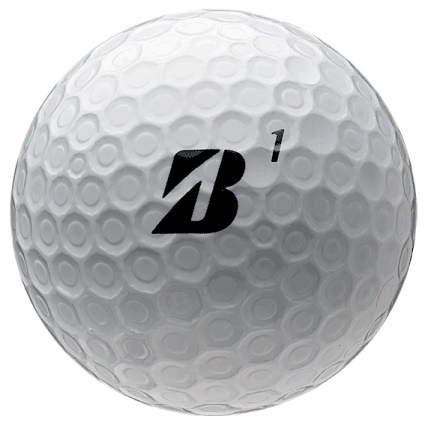
We definitely don’t recommend choosing a golf ball based on its dimples alone, but it’s worth knowing what their purpose is.
Most modern golf balls have between 300 and 400 dimples. Although golf ball manufacturers have their own ways of dimpling their balls, the goal is the same: to reduce drag and increase lift resulting in more distance.
Dimples are essential in order to get the aerodynamic performance expected from golf balls today, as opposed to smooth balls.
Beyond the number, dimples can also have difference shapes (such as spherical or hexagonal) and be arranged in different patterns.
It’s difficult if not impossible for the average golfer to predict the ultimate effect of a specific dimple configuration, so your best bet is to look at what the brand says about the dimples of a particular golf ball and consider if it matches the needs of your own game.
5. Price

You might not want to spend more than $30 for a dozen golf balls, and that’s perfectly fine.
But how close to $30 are you willing to go? Would you spend less than $20 or even less than $15 on what might be considered “bottom-of-the-barrel” balls?
Cheaper golf balls may have a simpler construction, have less feel, have sub-optimal energy transfer, or have generally inferior performance. But in this guide, we’ve tried to include quality golf balls over a range of prices under the $30 mark.
Don’t forget that instead of buying new, you could save a considerable amount of money by buying recycled (used) balls on places like eBay. This way, you could get your hands on premium models that normally approach $50 for less than $30. We recommend only looking at balls with condition ratings of AAA or above.
Conclusion
Unless you’re a scratch golfer or a professional, you simply don’t need to play premium golf balls that cost $40-$55 or more per dozen. A good value ball under $30 will more than get the job done.
Most golf balls under $30 are softer with lower compression, with not quite as much spin capability around the greens compared to Tour balls. In any event, a golf ball that suits your game is a huge asset, and finding one that you do well with is actually pretty easy with a bit of knowledge and experimentation.
We suggest trying several of the balls featured on this page and seeing which one performs best for you.
Each of the golf ball models listed above deliver exceptional performance for the cost. We’ve given you the information you need; now it’s up to you to go the rest of the way.
It’s also very beneficial to read customer reviews to acquire some useful insights as to how golf balls actually perform. This will help you a great deal in the decision-making process.
Thanks for reading this guide. Which golf ball under $30 are you interested in? Do you have any questions? Feel free to leave a comment down below.


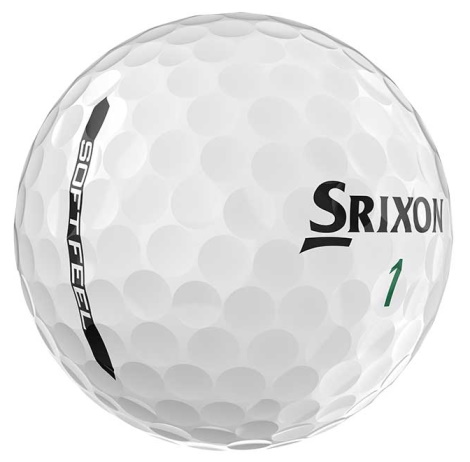
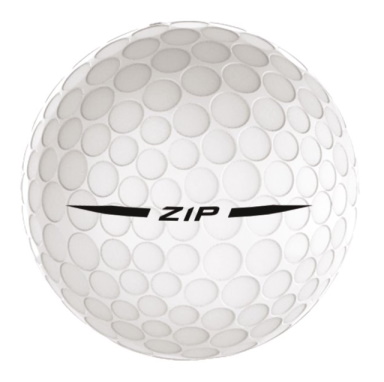

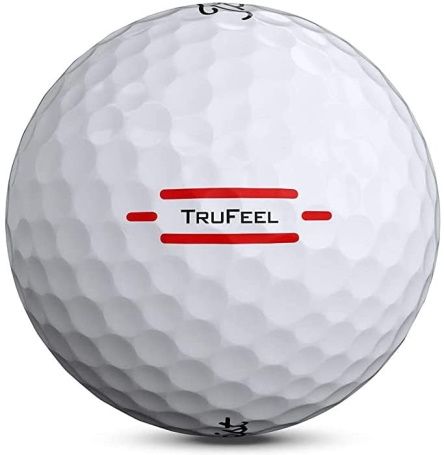


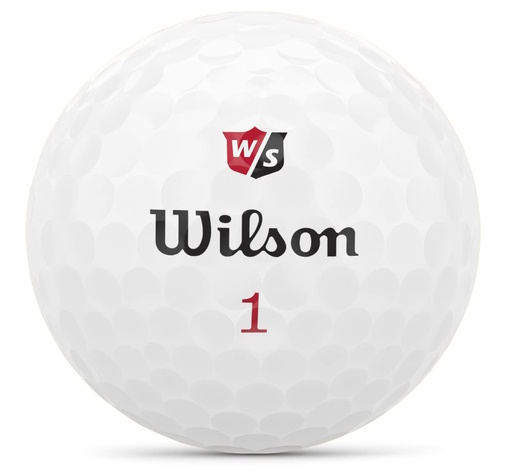
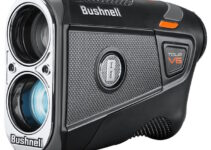
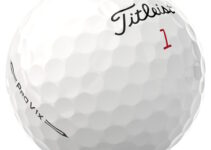
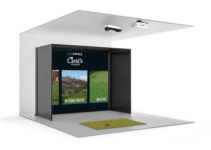
Good article. I bounce from ball to ball, currently using Callaway Supersoft. The distance I see in all the balls I’ve played is within ten yards. Srixon Soft Feel was my ball of choice, but the durability was poor. The cover would show cuts/imperfections in a single round. Hence, the convention to Supersoft. I play 27 holes almost daily. It isn’t unusual for the Supersoft to last multiple rounds. I have noticed the distance balls, Titleist Velocity and Srixon Marathon are a bit longer, but the loss of green side stopping isn’t worth the few extra yards. Bottom line, Any soft feeling ball will perform well if your game is so suited.
Thanks Randy!
Great recommendations here Paul! I currently use the Titleist Trufeel and am loving it. As said in the name, I’m all about feel! Love the softer ping off the putter face and responsive feedback when greenside chipping. Being a softer ball with a lower compression, I feel like it has a higher spin rate with wedge shots into the green. Potentially another ball could be added to this list. Maybe checkout the Srixon Marathon Golf Ball and see if it will qualify. Keep up the great work!
Thanks, Ethan. The Marathon is a lesser-known model and I’m not sure if Srixon has discontinued it or not, but I’ll look into it.